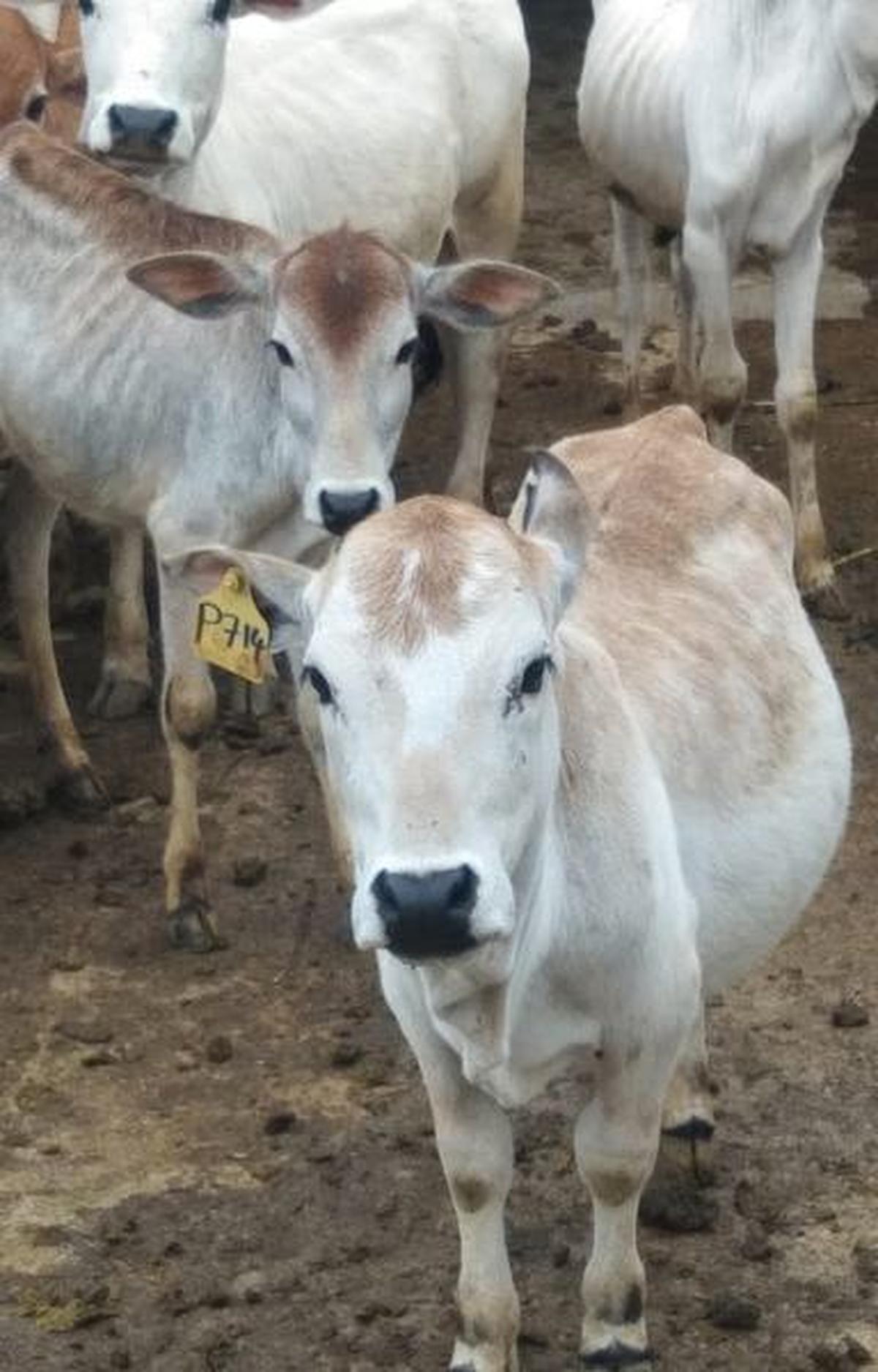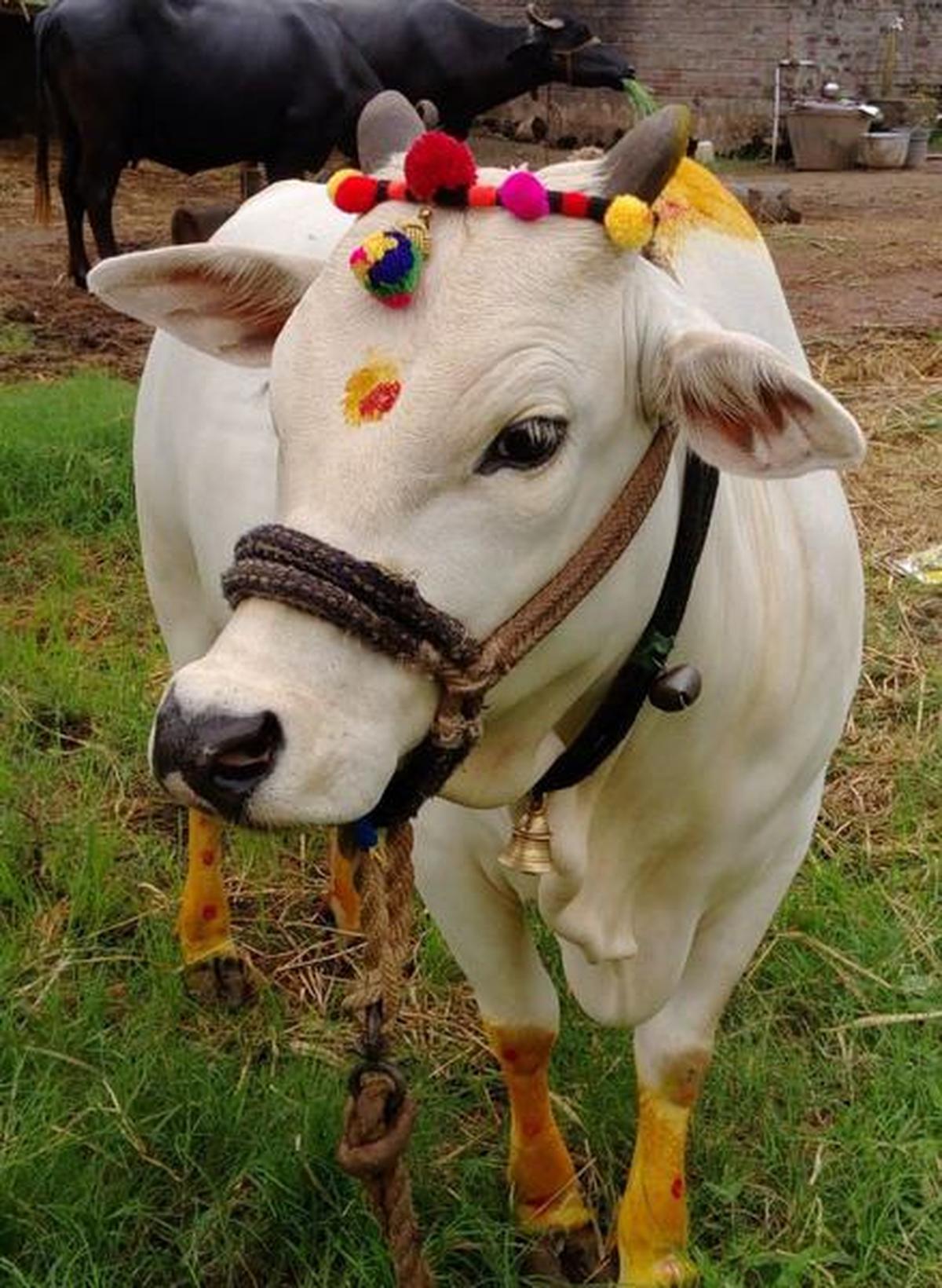Two centuries ago, hundreds of Punganur cows lived in their native land in Chittoor district. But now, their population is less than 50, says K, a farmer from Jangala Agraharam village, less than 30 kilometers from Punganur town in Andhra Pradesh’s Chittoor district. Mani (61) says.
Despite the popular belief that the Punganur breed of cows are the incarnation of Goddess Lakshmi and the Bovine Goddess Kamdhenu, the limited commercial feasibility of these cows, which are one of the smallest cattle breeds in the world, is a major reason for their declining numbers. This is Mr Mani’s opinion.
However, Jagadish Reddy (45), a natural farmer from Nalagampalle village near Punganur town, argues that the cow breed has huge commercial value. He emphasizes that there is no substitute for the Punganur cow given its soil-friendly nature.
“It is a great ally for farmers. As a natural farmer, I can say with confidence that Punganur cow dung is highly valuable and works wonders when used in making organic fertilizers of Jeevamritham and Ghanmritham.
“Who says it is not a commercially viable breed? I know many people who are willing to pay ₹5,000 to ₹7,000 for a liter of Punganur cow ghee, while regular ghee is available in the market for only ₹600,” says Mr. Reddy.

uncertain origin
While the origin of this slender cow breed remains a mystery due to lack of adequate documentation, Subramaniam Achari (74), a retired headmaster living in Srikalahasti, about 120 km from Punganur town, shares information he received from his grandfather.
According to him, three centuries ago, the Punganur cow enjoyed patronage from the kings and zamindars of the Vizianagaram dynasty, the vassal kings of the Arcot Nawabs and the Palegars (chieftains) of the Deccan plateau. During the 18th century, the breed flourished in the then Arcot region, which includes today’s Rayalaseema region, parts of Karnataka including Bellary, Bengaluru and Mysore, and parts of Tamil Nadu.
It was during this period that Punganur cows were considered superior to other breeds. “While all other cattle were given normal fodder, this special breed of cows enjoyed delicacies like dates, cashews, almonds and honey-mixed vegetable and fruit juices. This may have been due to the belief that he was divine. During festivals, these cows attracted special attention of the royal families as they were given special worship,” he says.
However, most farmers and officials in the agriculture, horticulture, veterinary and dairy sectors say that this is all speculation and there is no accurate historical information about the Punganur cow.
On average, Punganur cows are 80–90 cm tall. With round and black eyes, strong frame and agile body, they can be mistaken for well-groomed pet dogs.
These dwarf-sized cows, which are brown, white and gray in color, mingle easily with other pets and cattle on the farm, presenting an interesting sight. Unlike other native or hybrid cows, the tail of the Punganur cow remains long and sometimes touches the ground.
Charmed for life
“When she walks leisurely, her gait almost resembles that of a girl with long braids as she walks. The Punganur cow displays a timid expression when you look directly into its eyes. You can see the blush on his cheeks. Overall, once you start raising a Punganur calf, you are hooked to it for life. If cows are well looked after, they have a lifespan of 20-25 years, although scientific studies say they live only for 12-14 years,” says P. Murali, a dairy farmer from Punganur.
However, the people who raise these cows usually share a strong bond with them, and the death of the owner or the copy would be unbearably painful for both, says Mr Murali. He says that there are instances that after the death of the cow, the owner becomes dejected for life and the cow is not able to breathe for a long time in the absence of its owner. “This would be the main reason why people shudder at the thought of rearing a Punganur cow,” he says.

practical hardship
Bhargav Polangari (28), a software engineer who runs a cowshed in Puttaparthi in Sri Sathya Sai district, discusses the practical difficulties of rearing a Punganur cow.
“Just remove the lens of romanticism from your eyes. The maintenance of the Punganur breed is expensive. You cannot treat it like other cattle breeds. Even if you choose to groom it in your compound or under a shed, it will not move. He feels that it is his birthright to enter your house. It demands to be played with you and your kids. And going on to a large extent, it treats your wife or mother as your own mother. So, you will naturally eliminate the idea of any business activity from it. This is the secret why most families feel reluctant to keep Punganur cows,” he says. Although his ancestors reared Punganur cows in the past, he stayed away from introducing this breed to the dairy farm.
After studying the nature of the Punganur breed for some time during his experience in dairy farming, Bhargava revealed a “mysterious” habit of the underdeveloped breed. “Many farmers and Punganur breed lovers told me. And I inspected a couple of times. This cow likes to eat dust and lick wet soil. Therefore this habit makes him vulnerable to diseases. The claim by animal husbandry and dairy sector officials that the Punganur cow is safe from diseases and known for its resilience is only half the truth. Moreover, tall claims that this breed gives two and a half to three liters of milk per day are impractical. The limit of a healthy cow is only one to one and a half liters of milk per day, which is enough for a family of three.”
The strong bond between the Punganur cow and its owner can also be established from the fact that not a single cow or bull of this breed has ever been seen among those seized or rescued from illegal transportation to slaughterhouses in the country.
never left
According to a senior professor at SV Veterinary University, most of the rescued cows will, in many cases, be sick and emaciated, making them unsuitable for breeding or dairy production.
“Under these circumstances, a very small number of animal owners abandon their animals in remote places. They continue to roam the streets before being captured by some of the gangs involved in this dark activity and taken to slaughterhouses. However, in the case of the Punganur cow, I have never seen a single instance of the animal being abandoned by its owner,” he says.
It is also interesting to know that the Punganur breed will breed until the age of 12-15 years and rarely thereafter. “If the matter is considered from the point of view of commerce then the owner has to keep the animal for almost a decade without any return. Incredibly, even those farmers who are poor choose to sail through life with this unique breed, even if it becomes barren. The bond they share is incredibly strong. This can also be a reason why many people do not like to raise them. However, many conservative families dream of owning a Punganur cow but are hesitant in doing so,” he said.
Meanwhile, in the last few decades, following the boom in Ayurveda and naturopathy, Punganur cow dung and urine are commanding high prices in the market. Owners of the breed in the combined Chittoor and Tirupati districts are said to be selling the raw material to their customers based in Bengaluru and Chennai. He believes that the demand for by-products is even higher in some ashrams nestled in the foothills of the Himalayas.
Guru Swami, owner of Punganur cows, who lives close to Sri Padmavathi Mahila Vishwavidyalaya in Tirupati, says cow dung mixed with some spices will work wonders in controlling diabetes, high blood pressure and kidney diseases.
The common practice is to mix cowdung powder with medicinal products and put it into small capsules for easy consumption. He says, similarly, dried cowdung powder is used in making cowdung cakes and incense sticks for special pujas.
“Unfortunately, most sellers of such by-products cheat customers. The use of perfumed products makes it difficult to trace pure Punganur breed material,” he says.
On the other hand, officials of government veterinary hospitals in Chittoor district, especially Palamaner, Punganur and Bangarupalem mandals (considered the native land of Punganur breed) believe that the Center and the State should take steps to revive this rare breed. Despite massive efforts by governments to breed, their numbers are “not at all” satisfactory. “It is true that they are flexible. Their owners keep coming to us only for vaccination,” explains a veterinarian. The Hindu,
A veterinary expert from Bengaluru said: “Like the Red Sanders wood species, which is endemic to the Seshachalam biosphere in the Eastern Ghats, the Punganur cow is endemic to Chittoor district, centered on the Punganur-Palmaner belt.”
Since there have been several incidents where sellers have tried to pass off other dwarf breeds of cows as Punganur cows, veterinarians and animal husbandry officials have warned that one should be cautious while purchasing them.
published – October 19, 2024 01:00 PM IST


